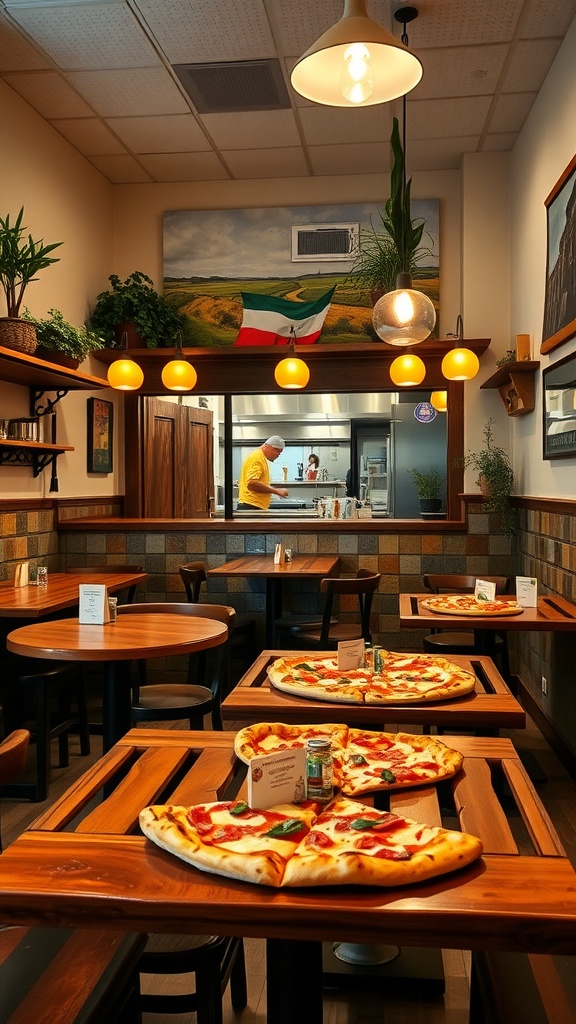Imagine stepping into a pizzeria that instantly transports you to Italy with its warm ambiance and inviting decor. A well-designed pizza restaurant interior can enhance the dining experience, making it memorable for guests. Whether you prefer a rustic vibe with wooden accents or a modern feel with sleek lines, the right interior design sets the stage for a delightful meal.
The charm of a pizza restaurant lies not just in its delicious offerings but also in its atmosphere. Thoughtful design elements can create a cozy gathering place where friends and families enjoy not only food but also the experience of dining together.
Creating a Welcoming Atmosphere
A pizza restaurant should evoke warmth and comfort, making guests feel right at home. Using rich colors and textured materials can significantly enhance the ambiance.
Consider incorporating patterned tiles that not only add character but also reflect the culinary heritage of Italian cuisine. Wooden tables and vibrant wall art can create an inviting space where diners can relax and enjoy their meal.
Open Kitchen Design
An open kitchen layout allows diners to witness the artistry of pizza-making firsthand. This interactive approach adds an exciting element to the dining experience.
Watching skilled chefs prepare fresh pizzas fosters a connection between the kitchen and the dining area, making the meal feel personal and special. This transparency can also reassure guests about the quality and freshness of their food.
Natural Elements in Decor
Incorporating natural elements, such as potted herbs and fresh produce, enhances both decor and the connection to quality ingredients. Herbs like basil and oregano not only look great but also add fragrance to the environment.
Artwork depicting Italian landscapes can further enrich the dining experience, transporting guests to the heart of Italy. These touches create a sense of place and authenticity that diners will appreciate.
Lighting Choices
Soft, ambient lighting is crucial for setting a cozy atmosphere. Pendant lights hanging over each table provide warmth while ensuring that diners can see their delicious meals.
Natural light from large windows or skylights can brighten the space during the day, while accent lighting can highlight artwork and decorative features, creating an inviting environment throughout the evening.
Design Elements that Shine
Warm, earthy tones for walls and furnishings contribute to a relaxed vibe. Incorporating rustic wooden tables enhances the casual dining experience and encourages guests to linger over their meals.
Decorative tiles that reflect Italian heritage can serve as stunning focal points, drawing the eye and enhancing the overall aesthetic. Every design choice should feel intentional, contributing to a cohesive and charming environment.
Planning and Execution
The design planning phase typically takes around four to six weeks, ensuring that every detail is carefully considered. Following this, construction can take approximately two to three months, depending on the scope of the project.
Having a clear vision and timeline is essential for creating a pizza restaurant that not only serves delicious food but also provides a memorable dining experience. Careful planning allows for a smooth transition from concept to reality, ensuring that the final product embodies warmth and charm.
Creating a Welcoming Atmosphere

A pizza restaurant interior should evoke a sense of warmth and comfort. Incorporating rich colors, textured materials, and ambient lighting can create a welcoming environment. Think about using patterned tiles, wooden tables, and colorful wall art that reflects the culinary heritage of pizza.
Incorporating an open kitchen design allows guests to witness the artistry of pizza-making, adding to the overall experience. Natural elements, like potted herbs or fresh tomatoes, can also enhance the decor while reinforcing the connection to freshness and quality.